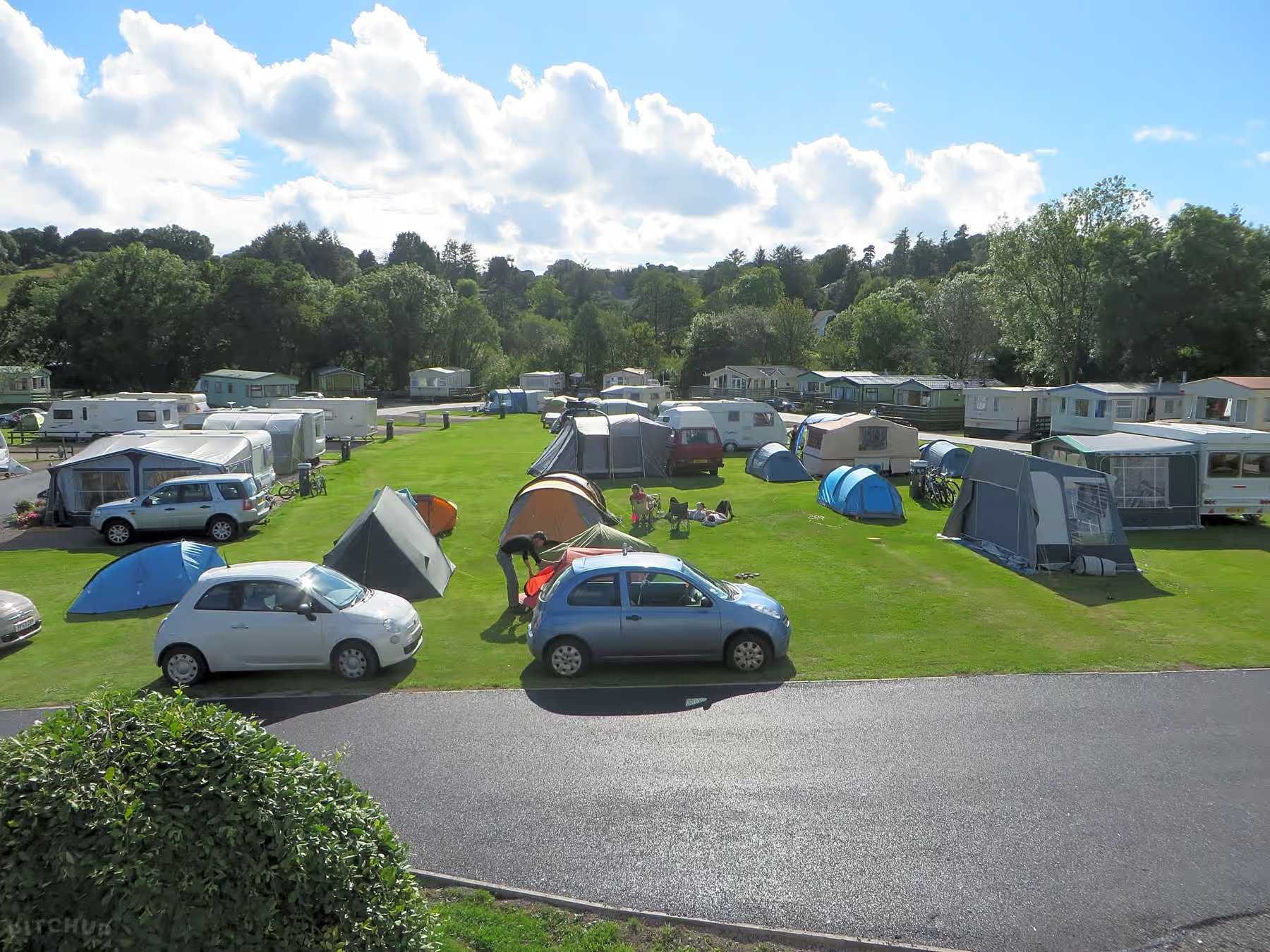Scotland’s South West Coastal 300
Whether you’re camping, glamping or in a campervan, Scotland’s South West Coastal 300 is one of the most appealing road trips around. This 300-mile driving itinerary hugs the coastline and links up some of the best parts of southern Ayrshire with Dumfries and Galloway. Along the way, you’ll see gorgeous beaches, splendid castles and tranquil forests. It’s circular too, meaning you can start and stop wherever you fancy along the route.
Enjoy sand and sea as you explore the peaceful coastal section of the route before heading inland to Scotland’s Southern Uplands, an often-overlooked mountainous region six times the size of Eryri National Park (formerly Snowdonia) and with dramatic views to match.
You’ll want to take your time to do justice to the scenery on this trip, so we feature 15 of the very best of camping, glamping or campervanning options in South West Scotland. Read on to find out more about the route, what to see along the way and practical tips to make your journey a success.
Campsites on the South West Coastal 300
Wild camping in South West Scotland
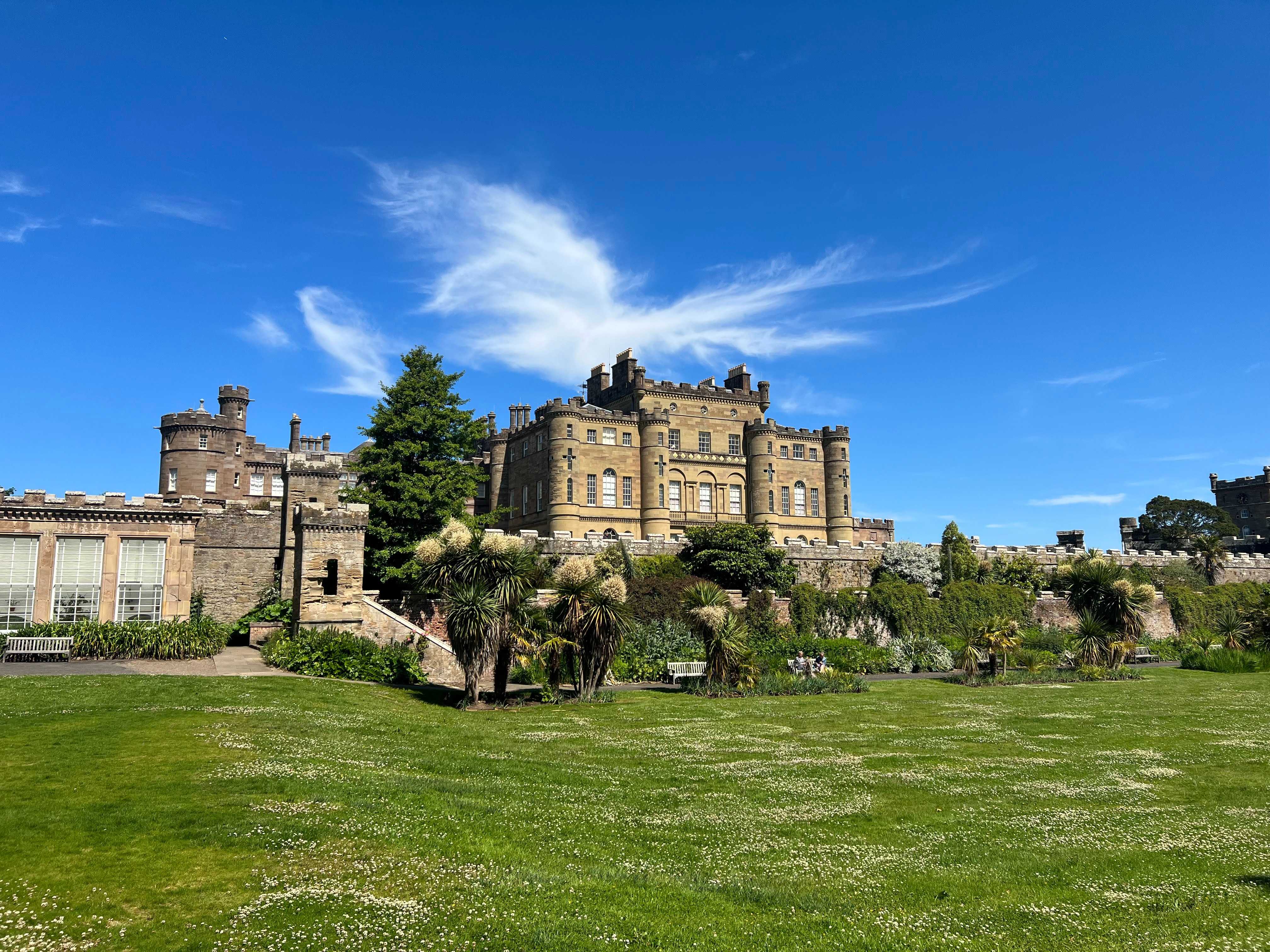
Route map
The South West Coast 300 is easily accessible from Scotland’s Central Belt, the North West of England and even Northern Ireland via the Stranraer ferry (crossing time to Belfast approximately two hours and 20 minutes).
As you can see, the roads get more twisty in the southern sections of the route. The roads get particularly narrow around the Mull of Galloway, located in the bottom-left of the map. If you’d rather break yourself in gently as you get used to your vehicle or to driving in Scotland, consider starting in Dumfries and heading anti-clockwise around towards Ayr.
Campsites on the South West Coastal 300
The South West Coastal 300 is well served by campsites, with a wide range of options for all tastes and budgets. Whether you’re seeking budget accommodation or a little more luxury at glampsites, you’ll find somewhere that works for you.
There are dog-friendly sites in Ayrshire and Dumfries and Galloway if you don’t want to leave your canine companions at home – and in fact many of the attractions along the route (Culzean Castle and Crawick Multiverse for starters) welcome well-behaved pets as well.
There are equally well plenty of things to see and do around the route that are likely to appeal to kids. Bribe them with a ride on the Doon Valley Railway or a trip to Galloway Alpacas and they’ll hopefully be on their best behaviour throughout. Simply look for family-friendly holiday parks and you’ll soon be having the adventure of your lifetime.
As this area of south-west Scotland can get very busy during school holidays and the summer months, it’s always a good idea to book your accommodation ahead of time. And while more attractions are open in high season, there’s always something to see along the South West Coastal 300, even in winter. Check out our campsites around Ayr or Dumfries that stay open all year round.
To give you inspiration towards starting your Scottish odyssey, here’s our pick of the 15 best sites along the route of the SWC300, all recommended by Pitchup experts.
Five family-friendly holiday parks
1. Auchenlarie Holiday Park
Treat yourself to a beachside break at the park’s private cove after a day’s drive. You can also use the leisure centre, with its heated indoor pool, sauna for undoing any knotted muscles and the fully equipped gym (extra charges apply). Your catering needs are taken care of with alfresco dining and coastal views at the bistro or the takeaway dishing up home-cooked pizzas.
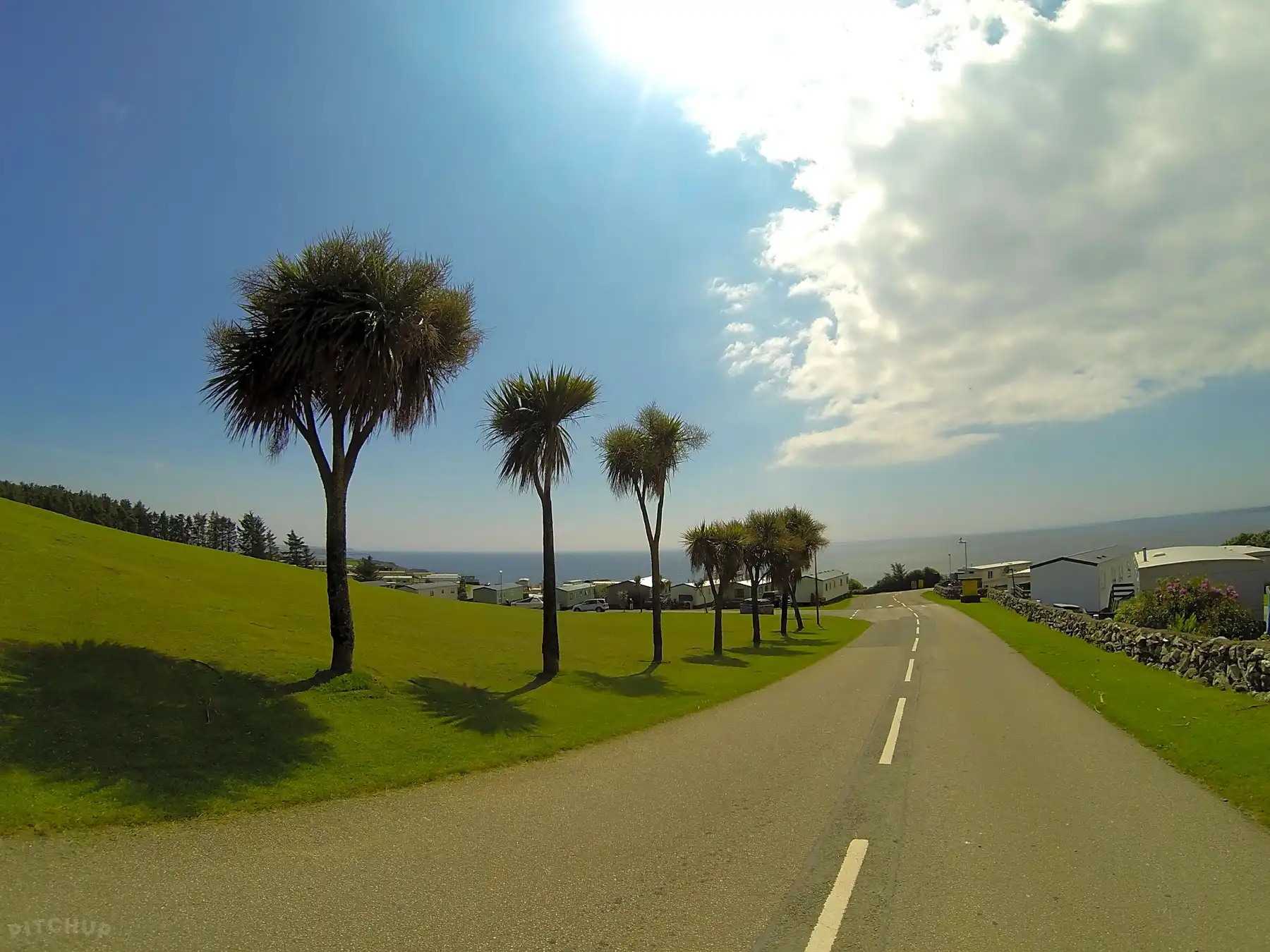
2. Brighouse Bay Holiday Park
A spacious pet-friendly park with masses for families to do: a golf course, hiking in local woodland, a beach for the kids to play on, pony trekking and kayak hire make this ideal for a rest day on the SWC300. A well-stocked shop allows you to replenish supplies and laundry facilities means you can have acatch up on the chores too.
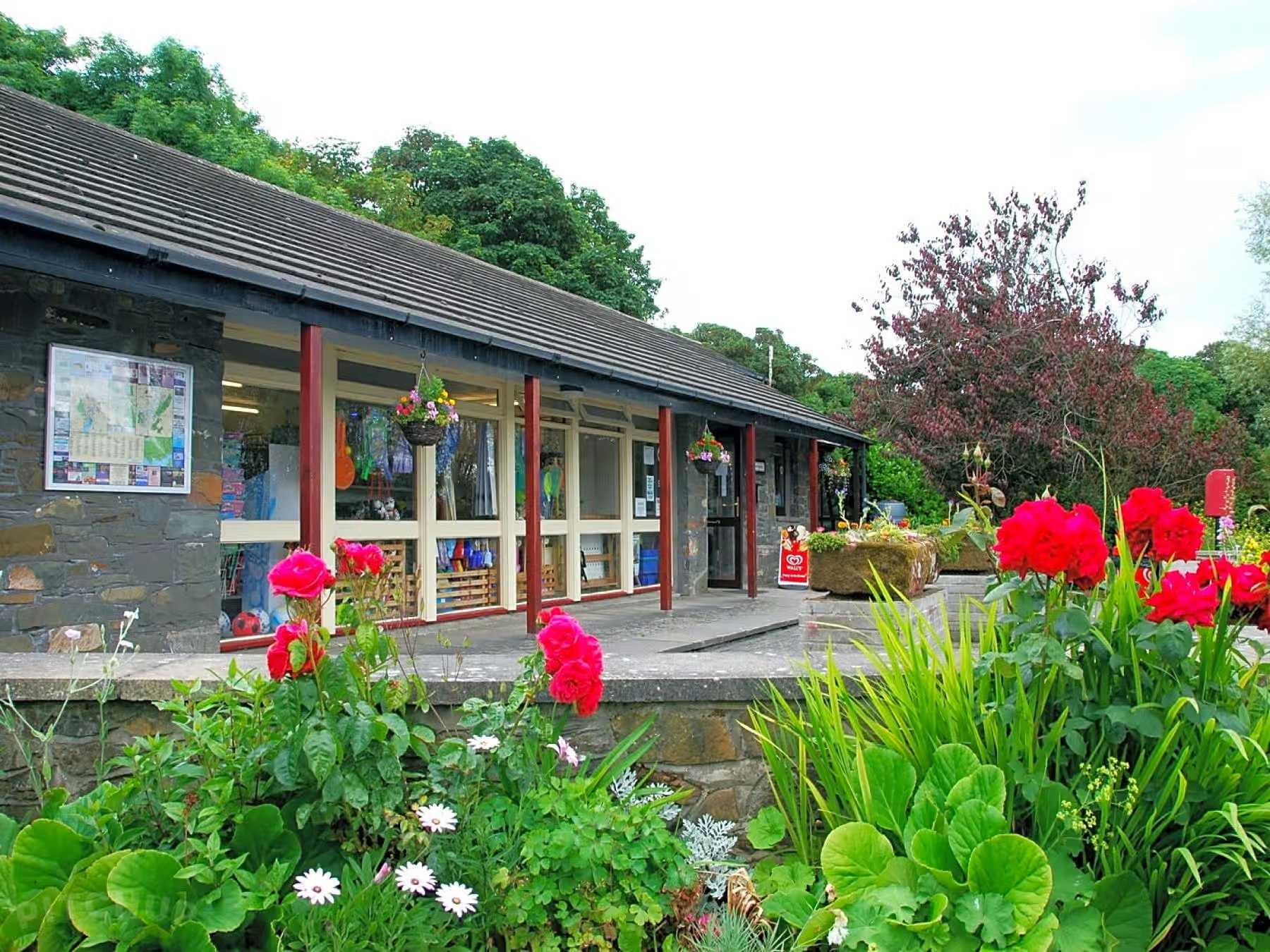
Book Brighouse Bay Holiday Park
3. Castle Cary Holiday Park
Centred around a 16th-century Scottish baronial castle and fishing lake, this site has indoor and outdoor pools for post-driving stretching of cramped muscles, and an on-site inn and café so you don’t have to drive too far to find a restaurant. Younger kids will almost certainly love the donkeys, while your teens can head for the pool table and video games.
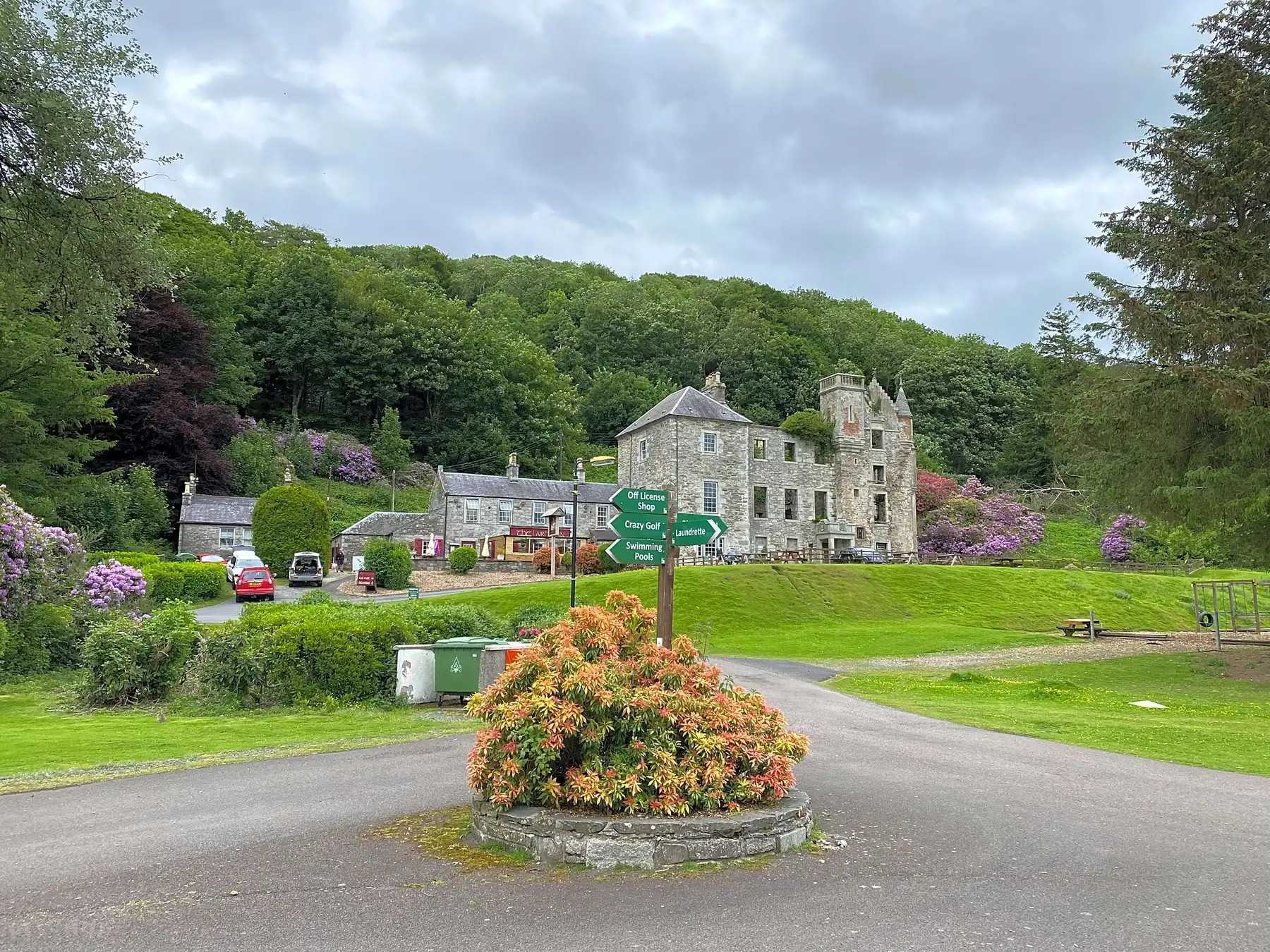
4. Southerness Holiday Park
With spectacular Solway Firth views, this site caters for everyone in the family. If you’re having a day off from the SWC300, adults can relax as daytime clubs take care of kids from toddlers to teens; there’s an indoor pool, a Jacuzzi and splash fountains; a soft play area; crazy golf; outdoor playgrounds… and a roster of evening entertainment for the whole family in the bar.
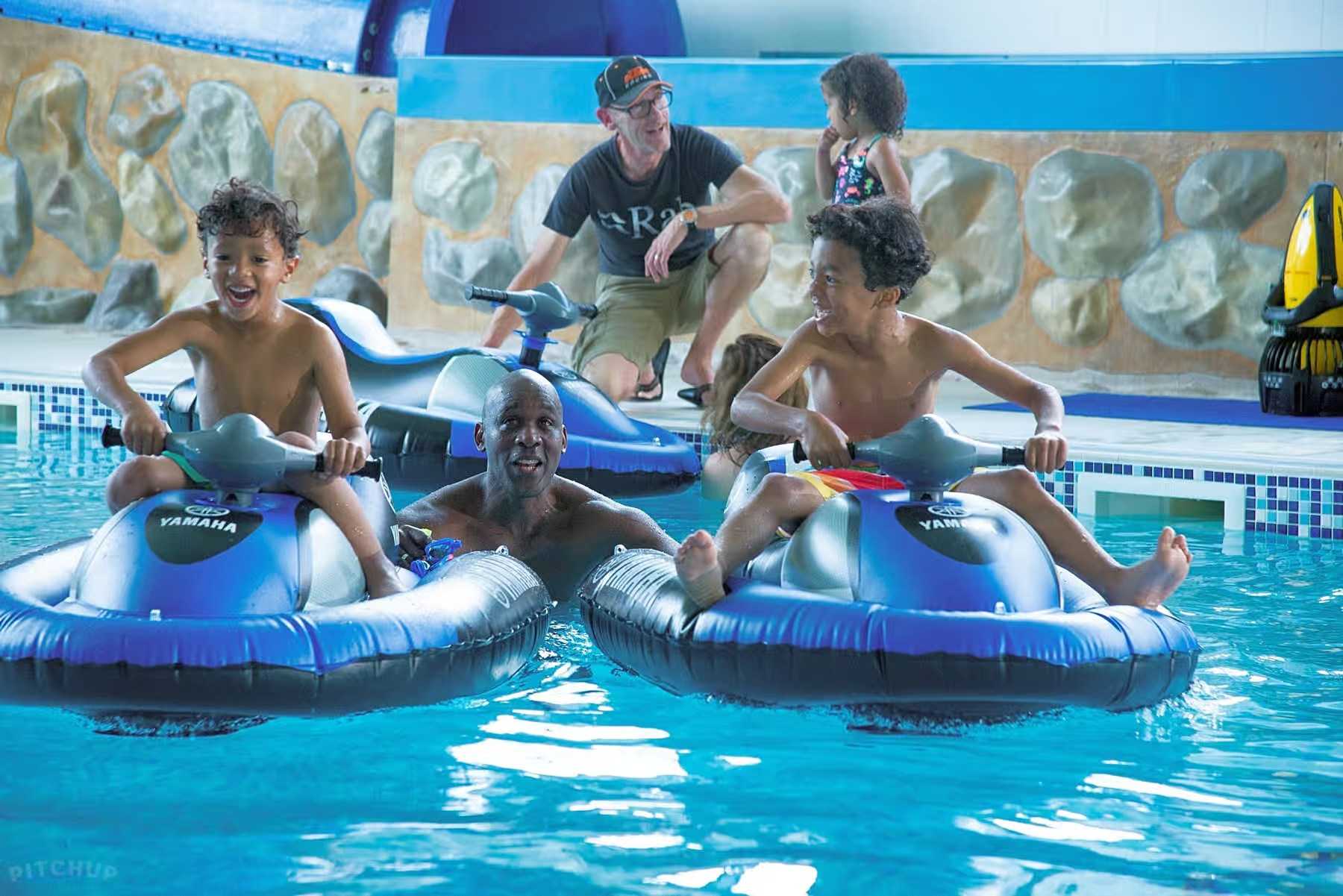
5. Sundrum Castle Holiday Park
This is a great all-rounder for families needing a break from the car. Relaxing daytime choices include an indoor pool and solarium, bowling or crazy golf. At night, live music, cabaret, dancing and comedy are yours in the swish entertainment venue, and you won’t need to worry about cooking as there’s a bar-restaurant, coffee shop andfish and chip takeaway on site.
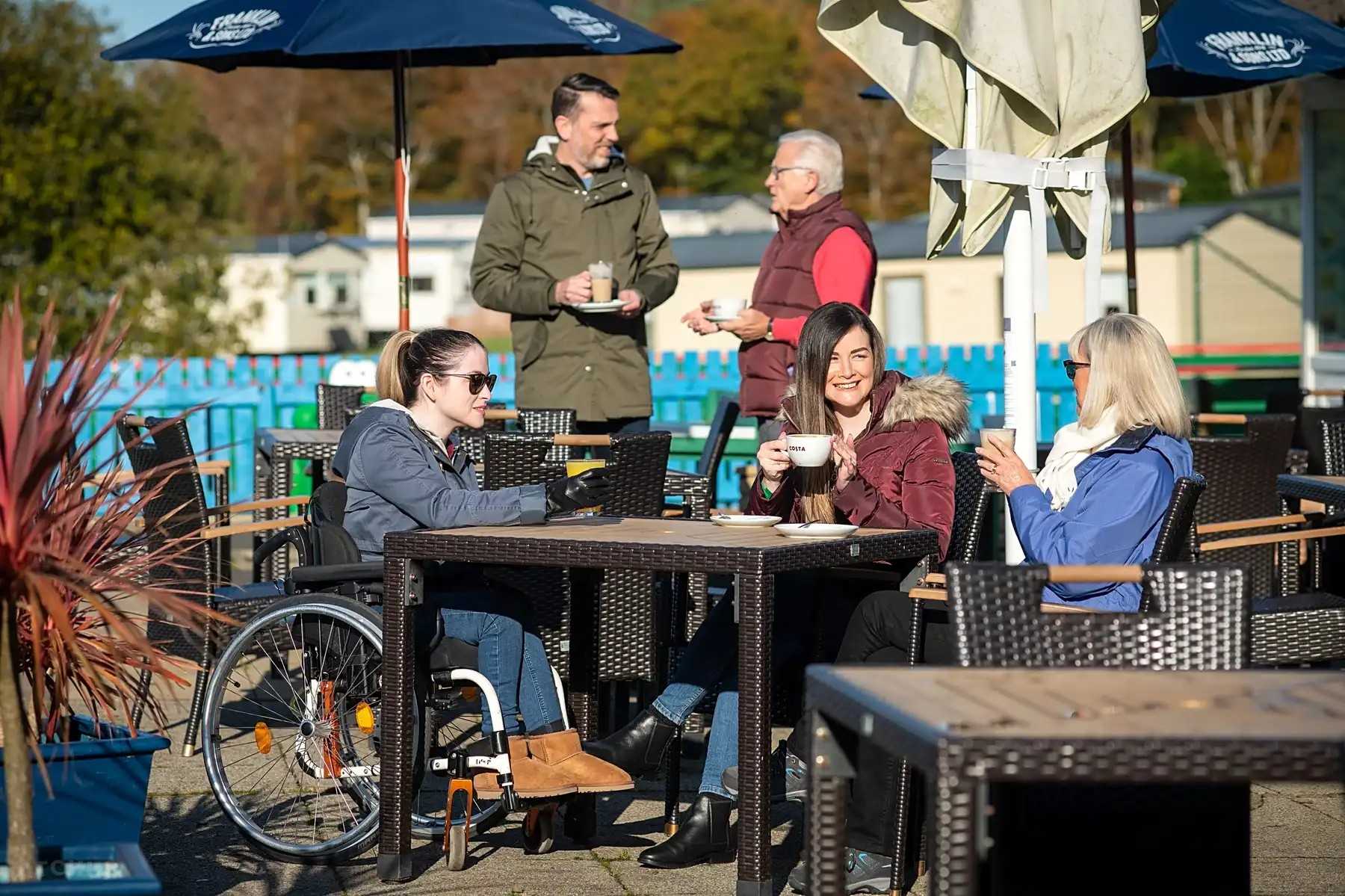
Book Sundrum Castle Holiday Park
Five of the SWC300’s top campsites and glampsites
1. Balloch O’Dee Campsite
This basic farm site has several things going for it that draw in travellers from the SWC300 route: it’s dog friendly so you can exercise pets around the spacious camping field, and as it’s a “quiet” site, you should get enough shut-eye before early-morning starts. Better still, it’s only 15 minutes’ drive into Newton Stewart shops if snack supplies are running low.
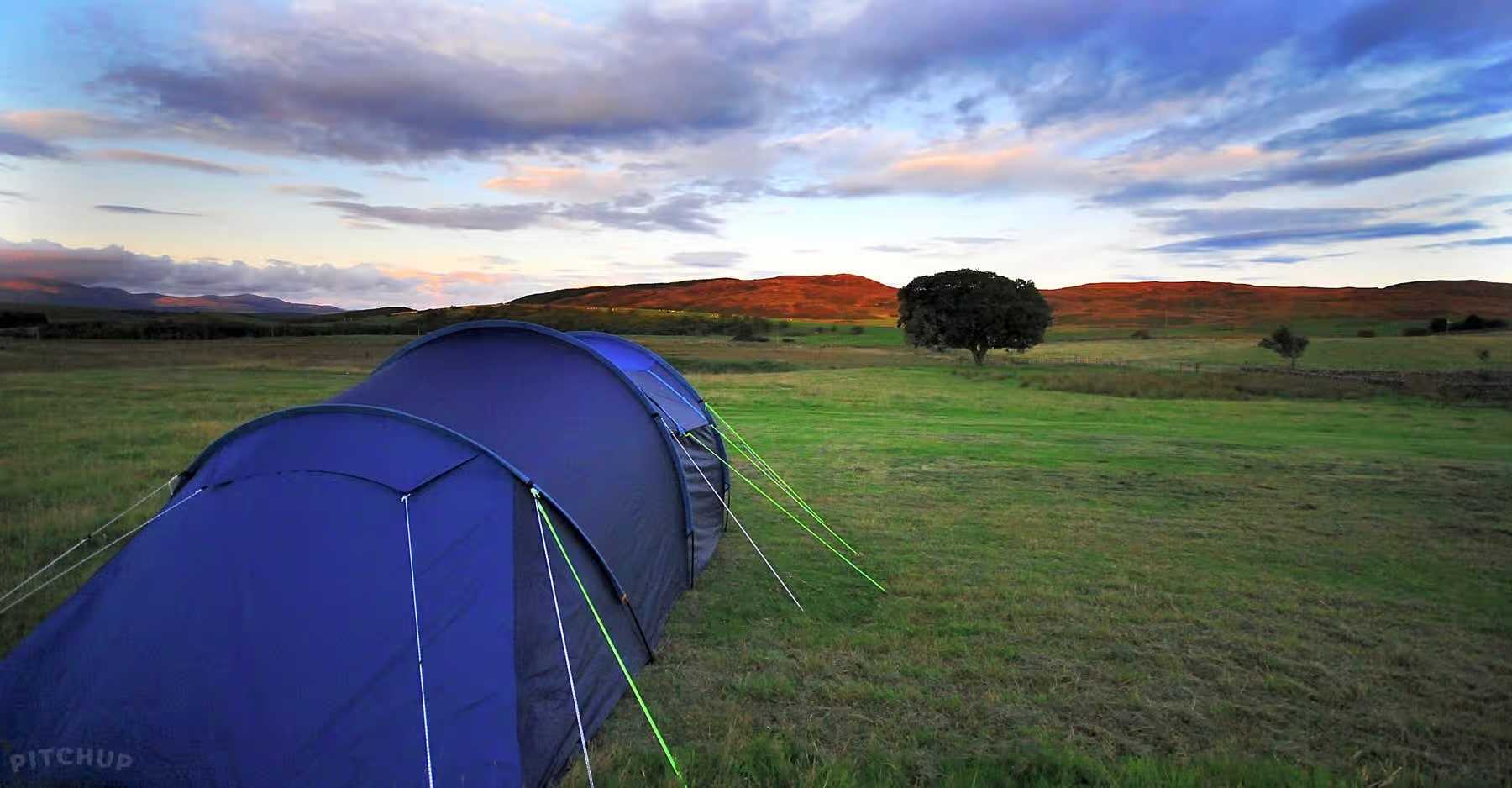
2. Bowness on Solway Camping and Glamping
A Cumbria park close to the M6 and the England/Scotland border, so it’s handy for a stopover on long journeys north or south. Everyone is well taken care of on site, thanks to the well-equipped gym, bistro, bar and a tuck shop selling ice creams, soft drinks and alcohol – and if you’re travelling with the family pet, there’s doggie ice cream in the shop too.
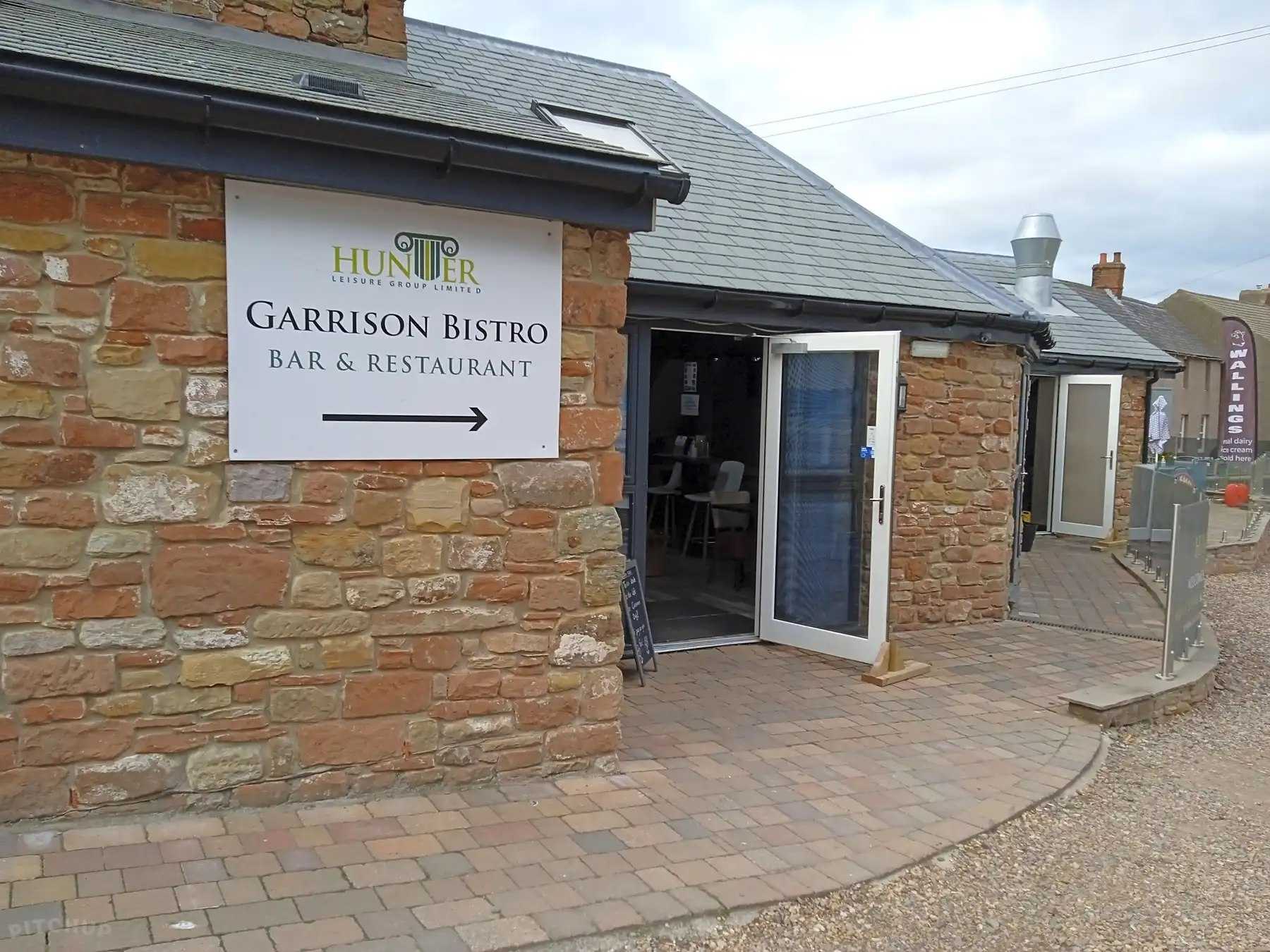
Book Bowness on Solway Camping and Glamping
3. Catrine House
Handy for visits to the Robert Burns Birthplace Museum in Ayr, this farm site for tents and tourers also has easy access to the A76 for getting back on your route. The vibe is decidedly rural, but if you’re not into self-catering, there are cafés and pubs in Catrine (five minutes’ drive), as well as takeaways that will deliver to the camping field.
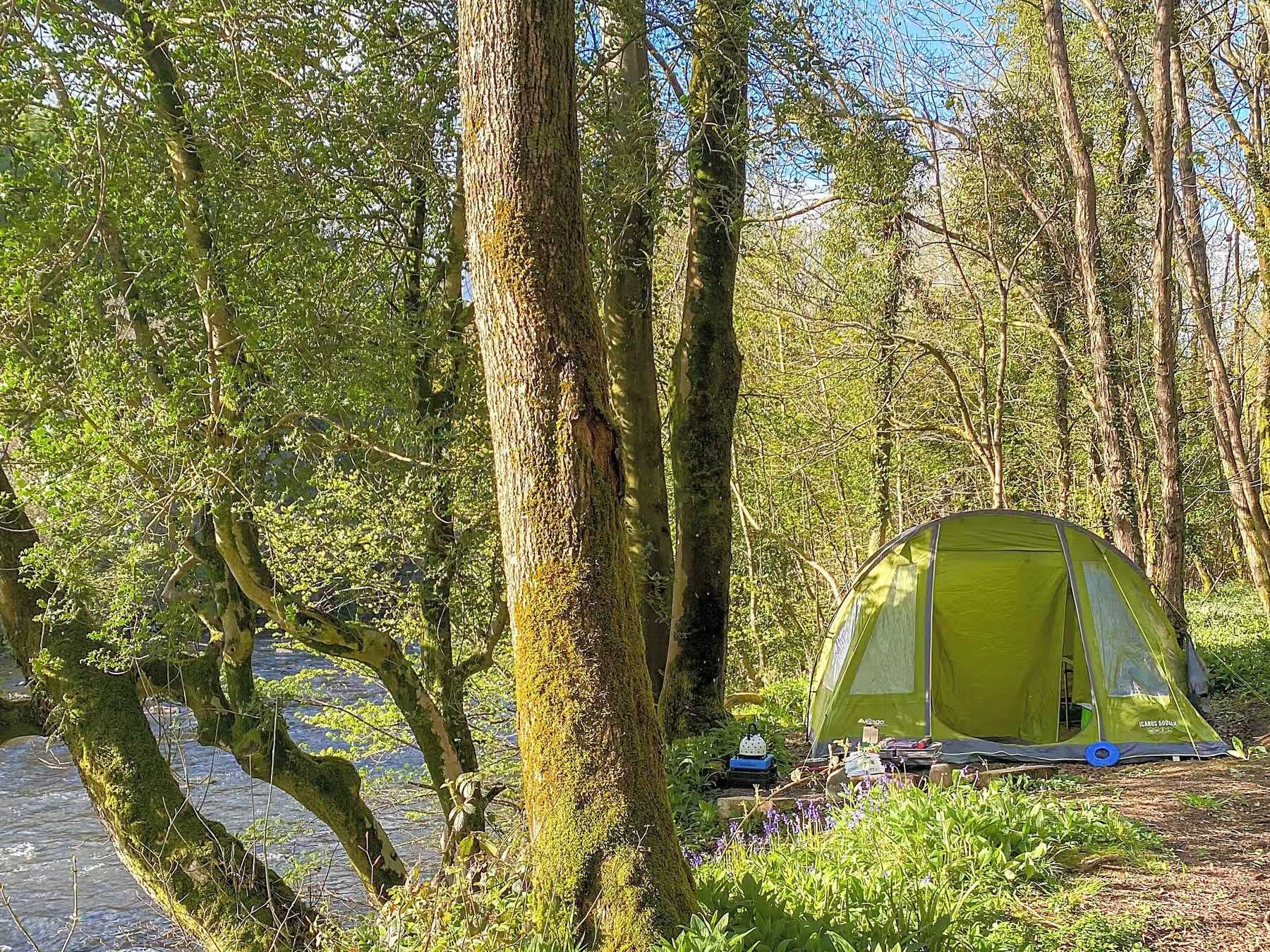
4. Hensol Estate Holidays
Your chance to try out nearly wild camping on a wildlife haven between two lochs near the gorgeous Galloway Forest Park. Pitch up wherever you like on spacious fields; you’ll have the reassurance of access to basic amenities like toilets and showers, and you’re within a mile of a well-stocked shop in Mossdale village. Apart from those amenities, you’re on your own.
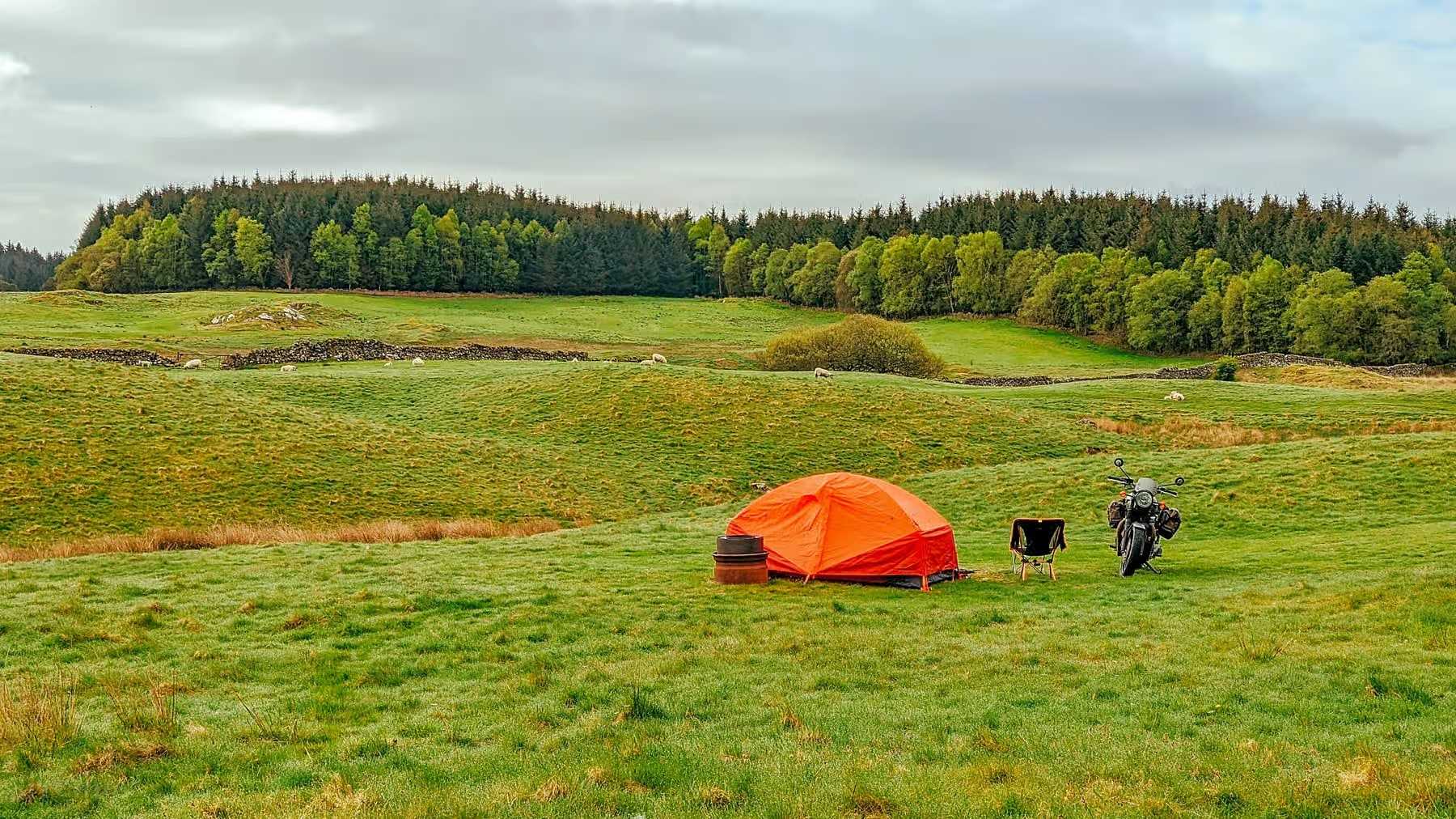
5. Hillend Camping and Motorhome Aire
For a relaxing overnight stop, this basic, family-friendly space is about getting back to nature alongside Dippol Burn; keep an eye out for badgers, hedgehogs, deer and owls at twilight. Simple facilities include a shower and loo, and although barbecues are allowed on the camping field, there’s a pub and takeaways in Auchinleck village (five minutes’ drive) if you’re too tired to cook alfresco.
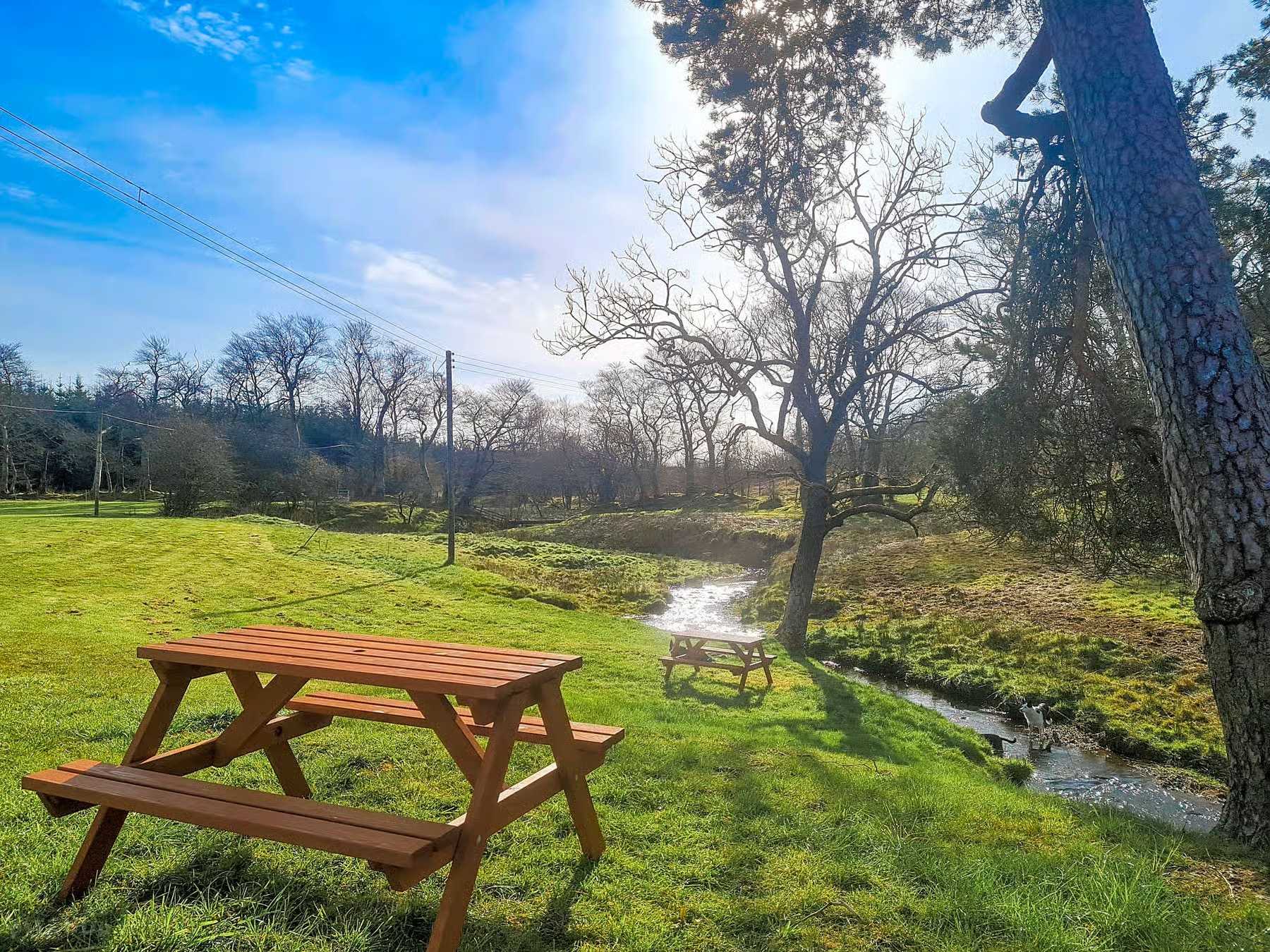
Book Hillend Camping and Motorhome Aire
Top five tourer and caravan sites
1. Anwoth Caravan Park
Big on family-friendly facilities including a laundry room, constant hot water, hair dryers and shaving points, this small park makes a restful overnight stop. It’s also only 10 minutes’ walk from the centre of Gatehouse of Fleet, meaning you can abandon the car and stroll into town to stockpile picnic goodies, have a pint in the pub or eat in one of the cosy restaurants.
2. Castle Point Caravan Site
Set among spectacular coastal scenery and with three beaches in walking distance, this site has a play area for kids and a communal barbecue area for family meals. Keep on top of housekeeping in the laundry room, and stock up on basics in the food shop at Colvend, about a mile away. A handy base if you’re planning a visit to Galloway Forest Park. 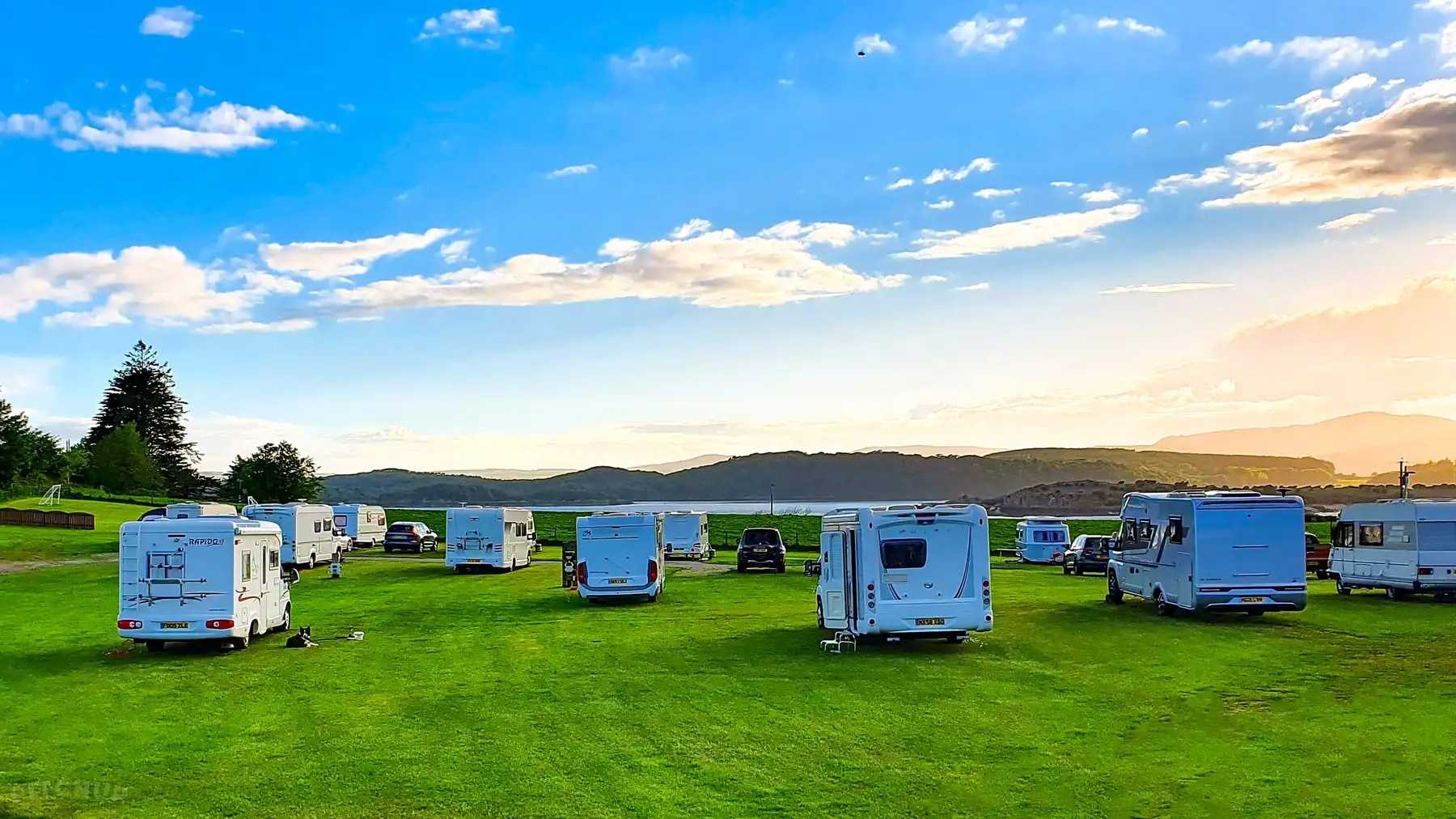
Book Castle Point Caravan Site
3. Glentrool Camping and Caravan Site
This is the only campsite actually in Galloway Forest Park, and it’s an ideal base for a rest day of woodland forays on foot, mountain biking on the 7Stanes trails, birdwatching at RSPB Wood of Cree Nature Reserve, and staying up late to witness dazzling display of stars on clear nights. Amenities include a shower block, motorhome service point and a small shop.
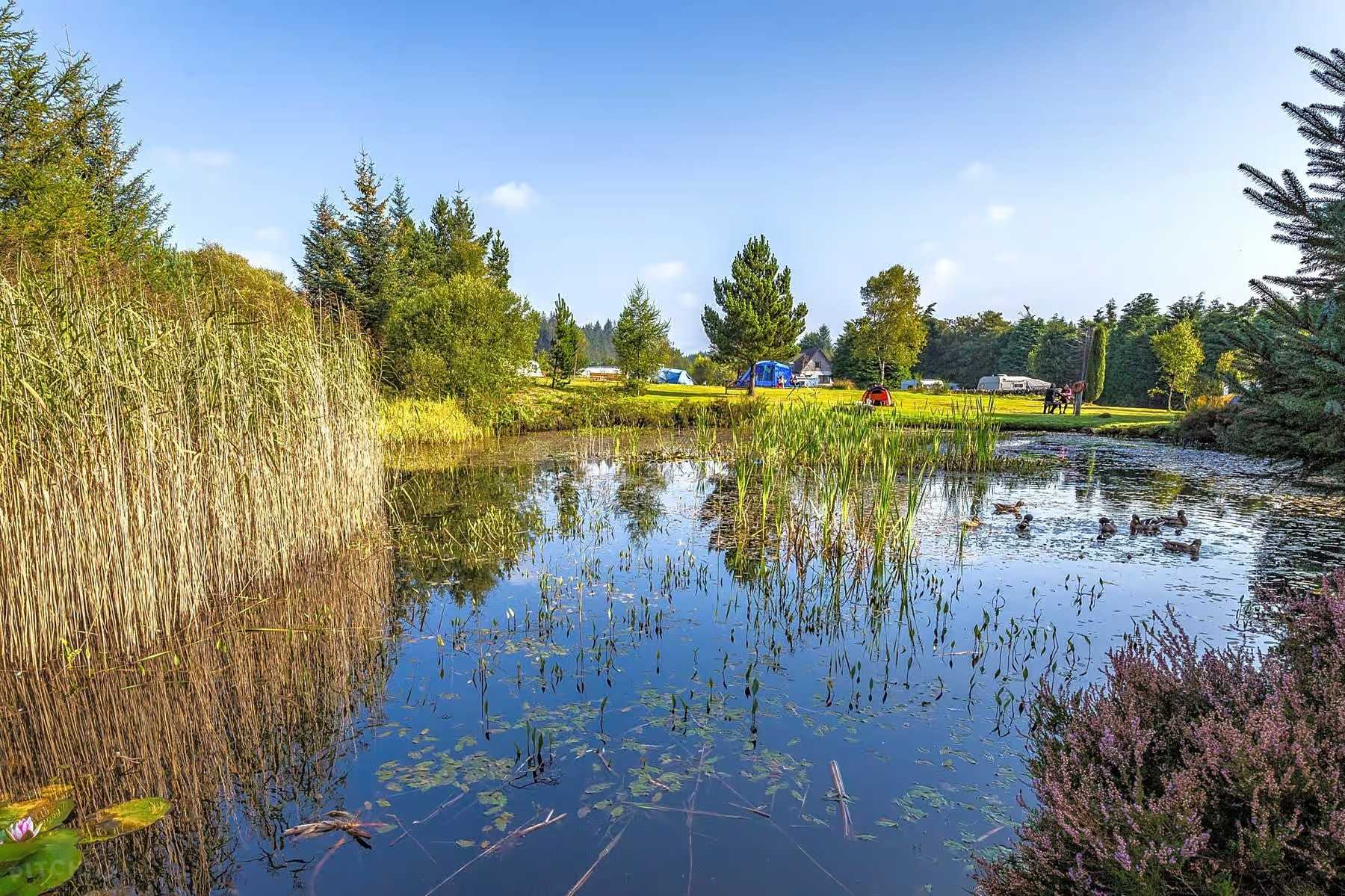 Book Glentrool Camping and Caravan Site
Book Glentrool Camping and Caravan Site
4. Hoddom Castle Caravan Park
Useful as it’s only 25 minutes’ drive from our suggested start of the SWC300 at Dumfries, overnighting at Hoddom puts you in the grounds of a splendid 16th-century castle. You’re welcome to stretch weary, car-bound muscles (dogs included) on woodland walking trails, and if you have time in hand, the site has a nine-hole golf course and fishing on the River Annan. 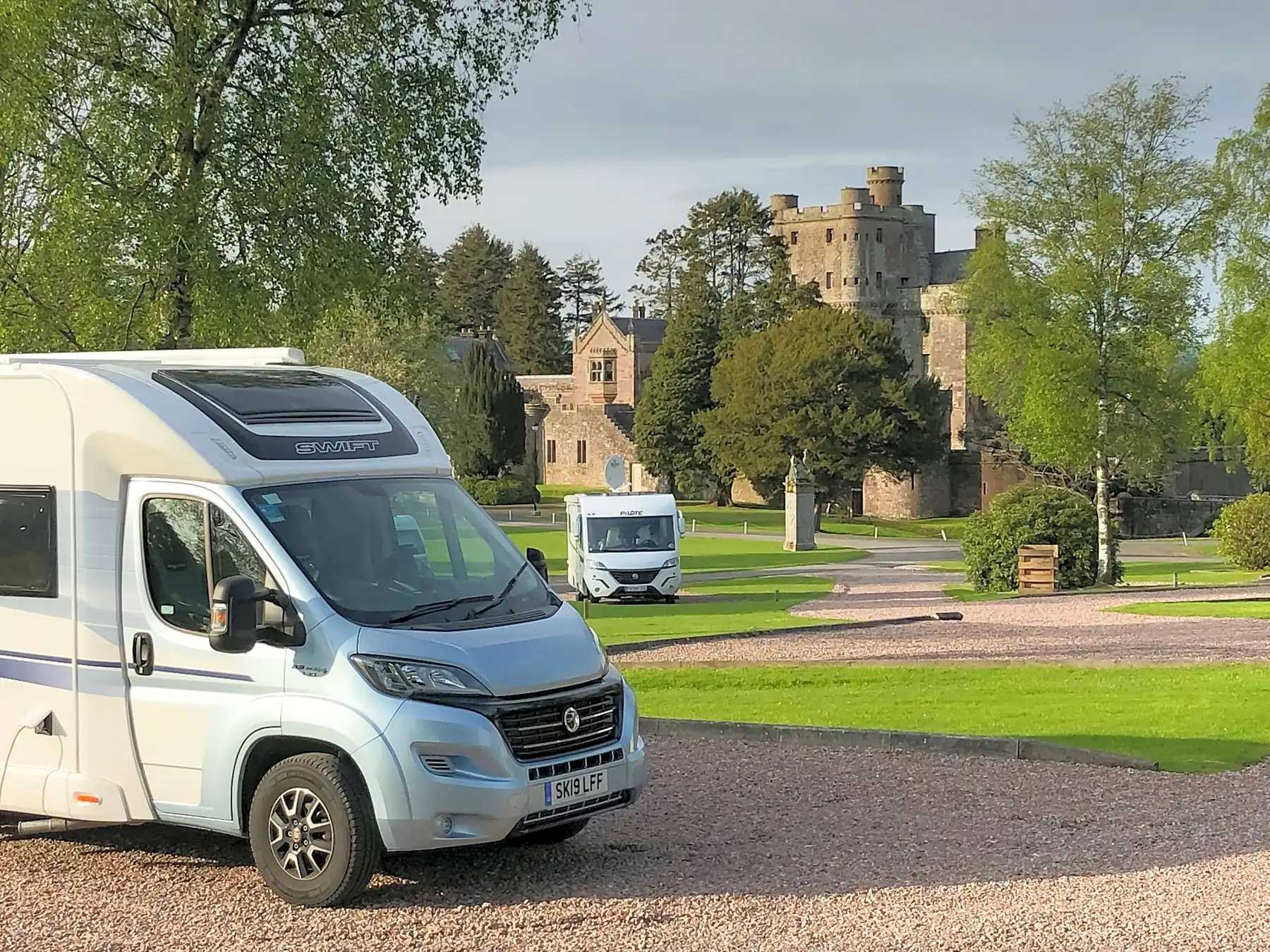
Book Hoddom Castle Caravan Park
5. Westlands Country Park
A family-friendly site close to the border, this makes a great first or last stop on the SWC300 for anyone travelling to and from England. Sitting in around 100 acres of peaceful woodland, the site has three fishing ponds (fancy catching your own supper?) as well as a bar and restaurant serving local produce. If you need any provisions, Gretna is 15 minutes’ drive away.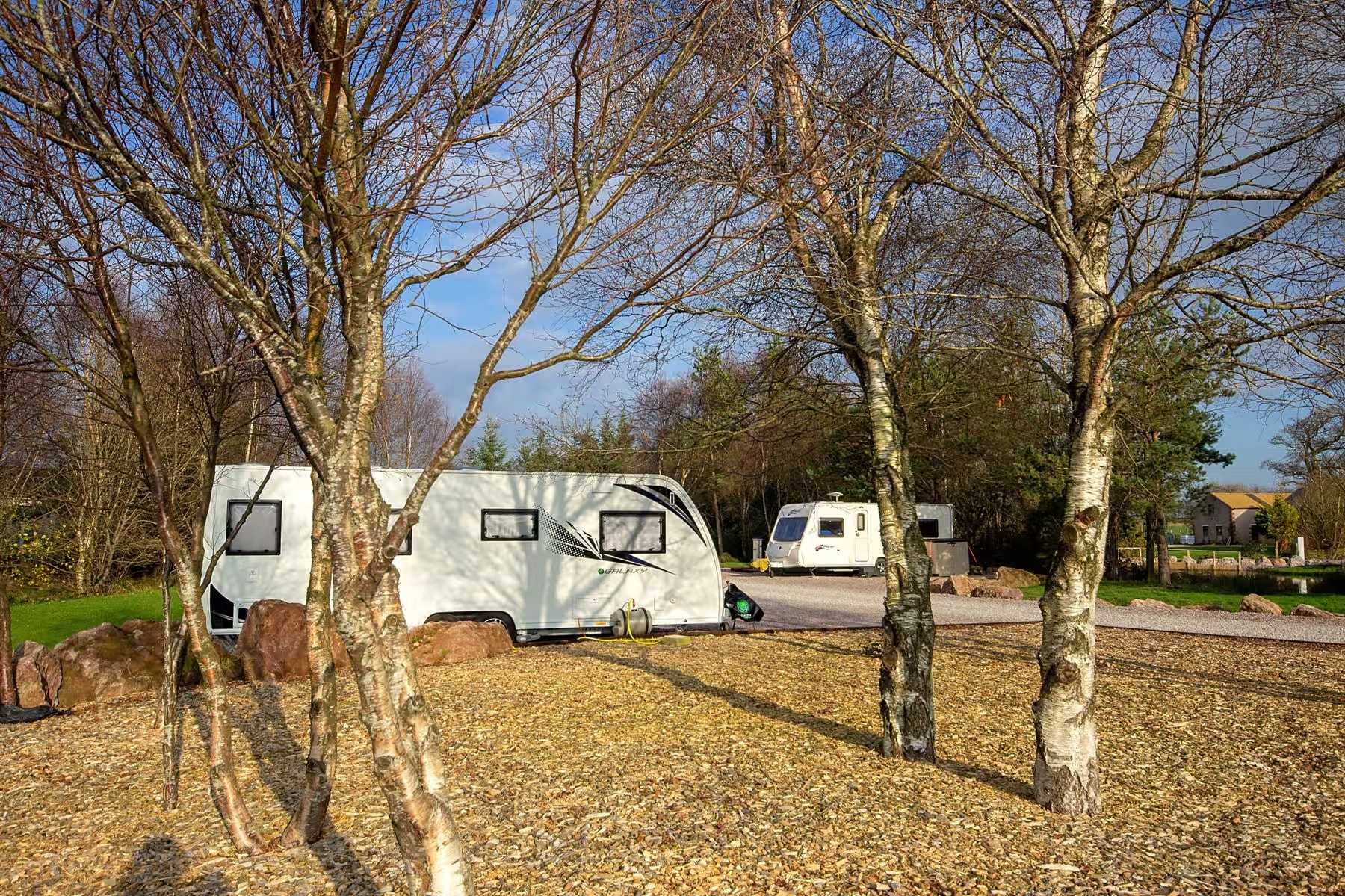
Wild camping in South West Scotland
Wild camping is legal in most places in Scotland, so it’s definitely a possibility on the South West Coastal 300. However, according to Scotland’s Outdoor Access Code, the right to wild camp only applies to tents – vehicles have no automatic right to overnight parking, so tent campers may have to walk some distance from their vehicle before finding a suitable place to pitch up.
Van campers will probably find a few informal spots where overnight stops are tolerated, but this is a grey area and it is possible that you will be asked to move on.
Wherever you pitch up, always remember the three golden rules of wild camping in Scotland:
-
Stay away from enclosed fields full of crops or farm animals;
-
Leave no trace by taking all possessions and litter away with you;
-
Be considerate by not pitching up near buildings and houses.
For more information on practicalities and etiquette, check out our comprehensive guide to wild camping.
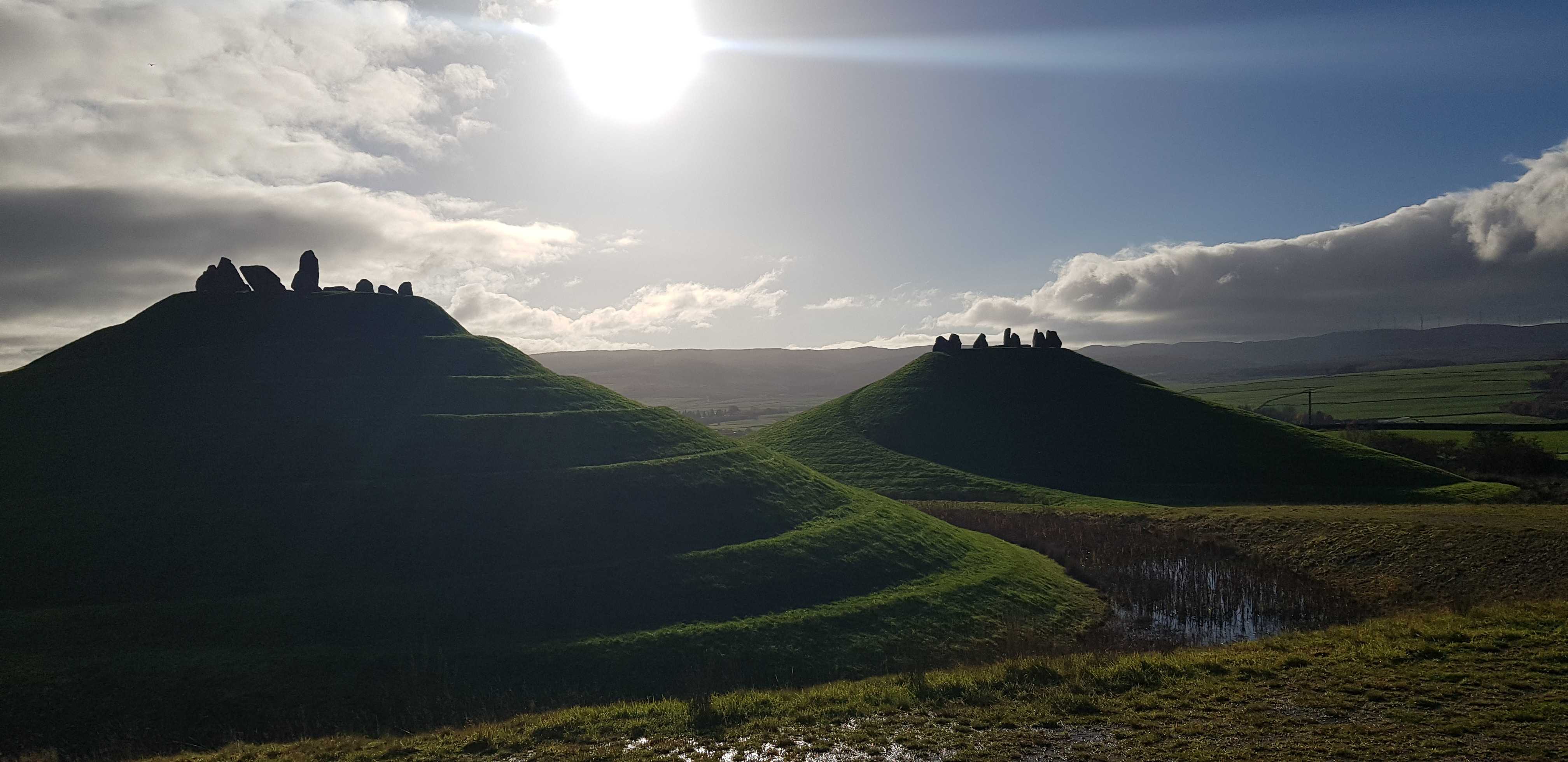
Nearly wild camping on the SWC300
Booking a campsite in advance is definitely preferable if you have to stick to a tight schedule on the drive, as finding a suitable wild camping spot can be time-consuming. If you’re looking for the convenience of a campsite with the peace of wild camping, check out our nearly wild sites in Ayrshire or Dumfries and Galloway.
Planning for the SWC 300
It’s fairly easy to be spontaneous as you explore the South West Coast 300 – while this is a quiet area of Scotland, it’s nowhere near as remote as the Highlands, which is good news if you fancy fish and chips for dinner or unexpectedly find yourself in need of a supermarket. That being said, a little planning can go a long way to making sure your road trip runs as smoothly as possible.
What to pack
The southern stretches of the Scottish west coast are fairly mild temperature-wise, but their location on the edge of the Atlantic Ocean means that wind and rain can never be ruled out, even during summer. Heading inland, the Southern Uplands have a climate and terrain similar to the Lake District National Park, with changeable weather conditions, so pack lots of layers, waterproofs and sturdy shoes or boots for walking. Midge repellent and sun-tan lotion are both advisable during the summer months.
Don’t want to forget anything? Check out our ultimate camping checklist before heading off. If you do leave something vital at home, there are outdoor shops around the route in Ayr, Newton Stewart, Dumfries and Moffat.
What vehicle should I take?
The South West Coastal 300 is based on a motorcycle route and is suitable for cars, campervans and motorhomes. If you’re towing a caravan, you’ll have no problem along most of the route, but some very narrow sections (such as the Rhins of Galloway) might be more challenging.
What can I see on the SWC 300?
Starting in Dumfries and heading north, here are some of the main attractions on the route.
-
Pop in to the Robert Burns House in Dumfries before you set off on your epic road trip. Scotland’s much-loved national revered poet lived here between 1788 and 1796, and the collection includes original manuscripts and a recreation of his study.
-
As you drive north on the A76, divert off to the east at Mennock to lunch in Scotland’s highest pub in Wanlockhead, a small village in the Southern Uplands that’s 467 metres above sea level.
-
High up in the Southern Uplands, the Crawick Multiverse probably isn’t quite what you’d expect to find in rural Scotland. This former mine has been transformed into a huge open-air art installation with spectacular views across the wider Sanquhar area.
-
Alloway’s Robert Burns Birthplace Museum was the childhood home of Scotland’s most famous bard. A massive collection of Burns-related ephemera is displayed at this interactive museum, and you can tuck into haggis and tatties at the neighbouring café.
-
Dating from 1569, Culzean Castle is another must-see, with an elegant 18th-century stately home, grand gardens and a deer park to explore.
-
Mighty palms, eucalyptus groves and exotic plants in a Victoria-era conservatory are highlights at Logan Botanic Garden, which is warmed by the Gulf Stream and enjoys an almost subtropical climate.
-
The Mull of Galloway Lighthouse lies at Scotland’s most southerly point, meaning there are pretty panoramas in all directions. The twisty, narrow road that takes you here is well worth negotiating, as the award-winning Gallic Craig coffee house lies at the end…
-
Scotland’s “book town” of Wigtown will be a highlight for bibliophiles, and the town also has a stone circle, spectacular views over the beach-fringed Machars peninsula and easy access to nature reserves including Wigtown Bay Local Nature Reserve and the Crook of Baldoon.
Find more things to do in Dumfries and Galloway
How long does it take to drive?
In decent weather and traffic conditions, driving at a leisurely pace to take in all the scenery, it takes around nine to 10 hours to drive the whole of the South West Coast 300. Most of the driving is pleasant and not all of it is along difficult winding lanes, so it’s perfectly possible to complete the trip in, say, four days. If you have the time, though, a full week on the South West Coast 300 is definitely the best option.
We’ve pulled together a suggested four-day itinerary as well as tips for a successful seven-day trip.
Four days on the SWC 300
Day 1: Start in Dumfries and set off early for a day of scenic driving anti-clockwise through the Southern Uplands. If you’re travelling up from England the night before, you won’t be short of high-quality campsites near the town. After travelling the remotest part of the route, you can stop for the night in the countryside around New Cumnock.
Day 2: There’s less driving involved today, so take it easy as you head down to the coast at Ayr (half an hour to 45 minutes, depending where you stopped the night before). This Victorian resort has wide sandy beaches, but for a more secluded bathing spot head a few miles further south to Heads of Ayr or the village of Dunure. Spend your afternoon at elegant Culzean Castle before heading to a campsite around Girvan.
Day 3: Today, you’ll be exploring the Rhins of Galloway, a spectacular peninsula with sandy beaches, lighthouses and gorgeous seascapes. Take your time for this section and wend your way along the coast until you get close to Newton Stewart, where there are lots of campsites available.
Day 4: Return to Dumfries along the quiet coastal road, making a detour to visit Caerlaverock Castle or the beaches around Kirkcudbright.
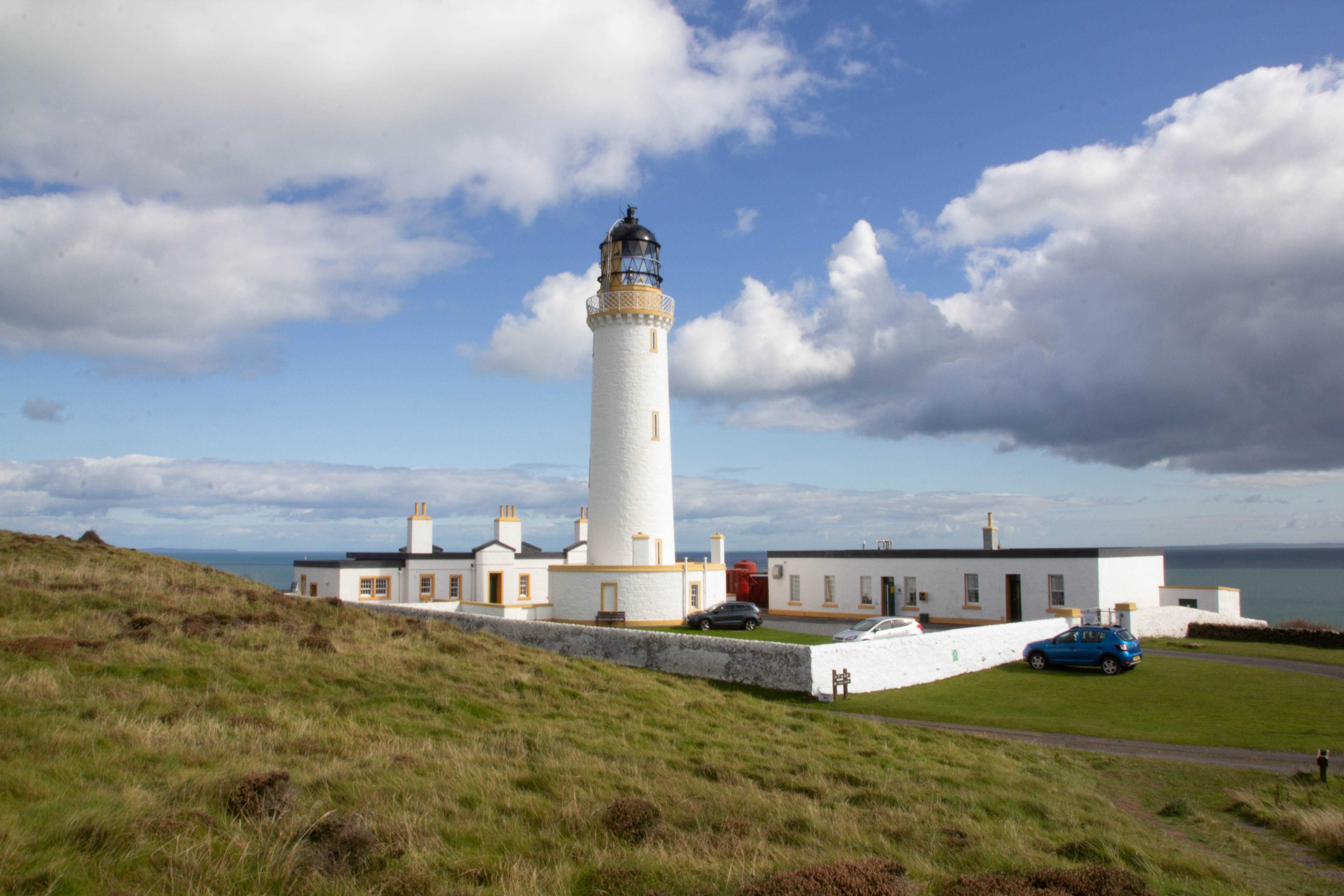
A week on the SWC300
If you’ve got a whole week to spend on the South West Coastal 300, it’s worth devising your own itinerary to focus on visiting the beaches, castles and villages that appeal to you. This is your chance to divert to the Isle of Arran from Ardrossan, or set a day aside for hiking in Galloway Forest Park. Explore lesser-known attractions too: cruise from Girvan to Ailsa Craig to see puffins and gannets in the bird sanctuary, or visit the photogenic fishing village at Isle of Whithorn.
Allowing yourself a full week is also a golden opportunity to uncover the hidden gems of the Southern Uplands. Tour the impressive art collection at Drumlanrig Castle and Gardens, head out for hill walks around Sanaquar or hike up to the gorgeous Grey Mare’s Tail waterfall.
So now you have all the information you need for driving and overnighting along the South West Coastal 300, while enjoying the road trip of a lifetime with friends, family or solo. If you’re feeling inspired to try further adventures on driving routes in Scotland, consider following the North Coast 500 in the Highlands – and when long-distance walks through spectacular glen scenery appeals, why not have a look at camping along the Great Glen Way?
